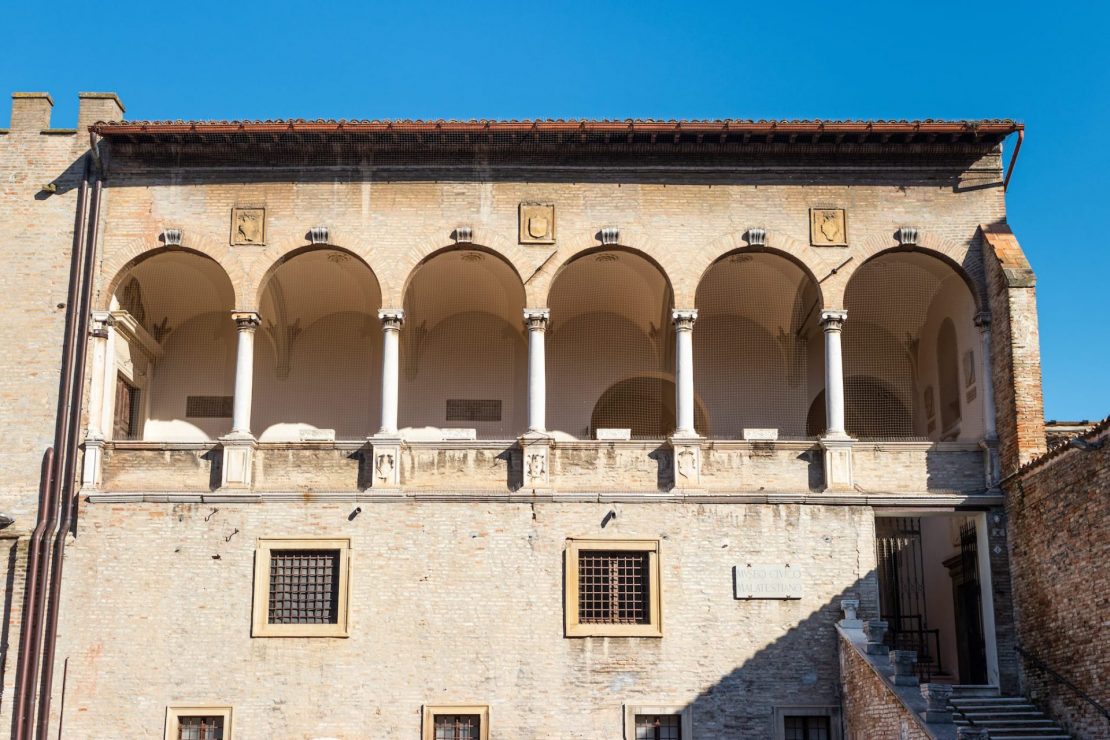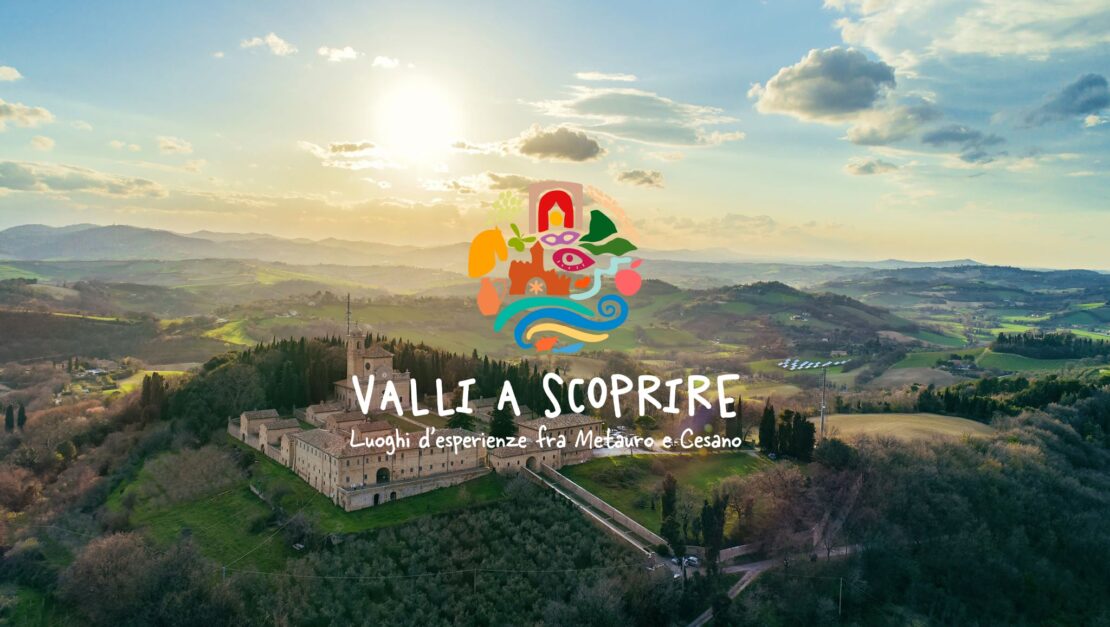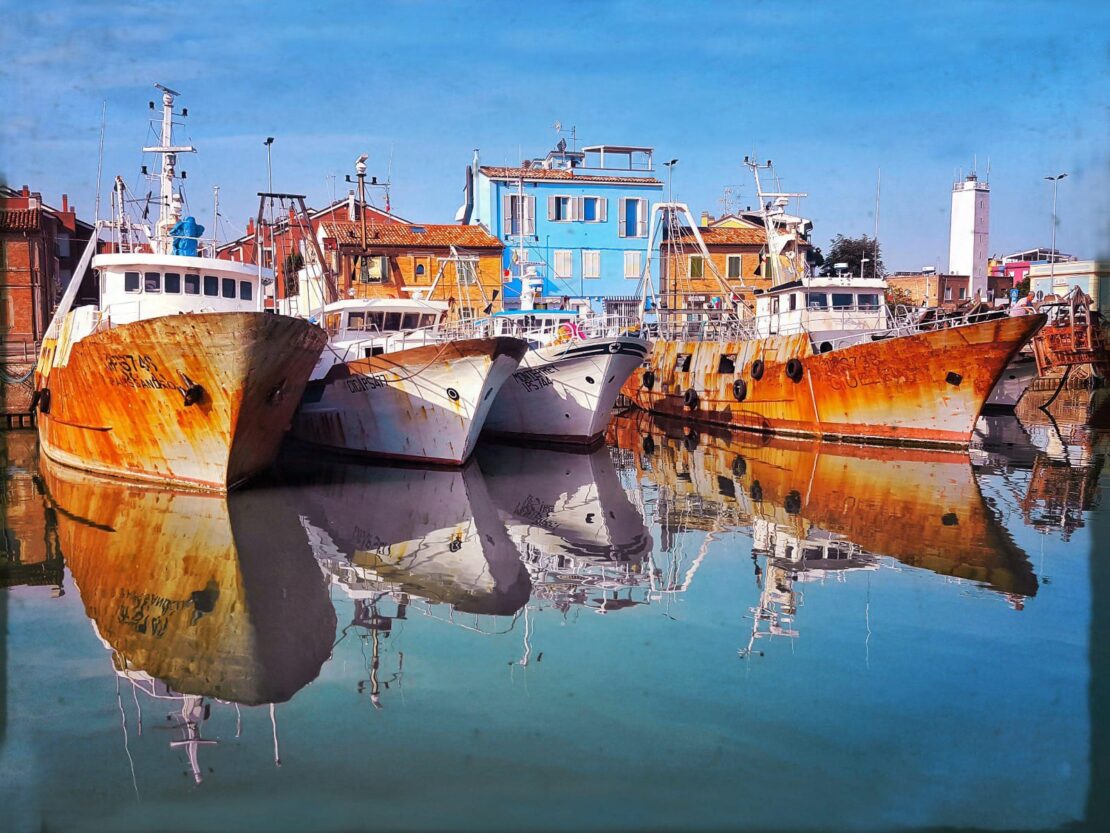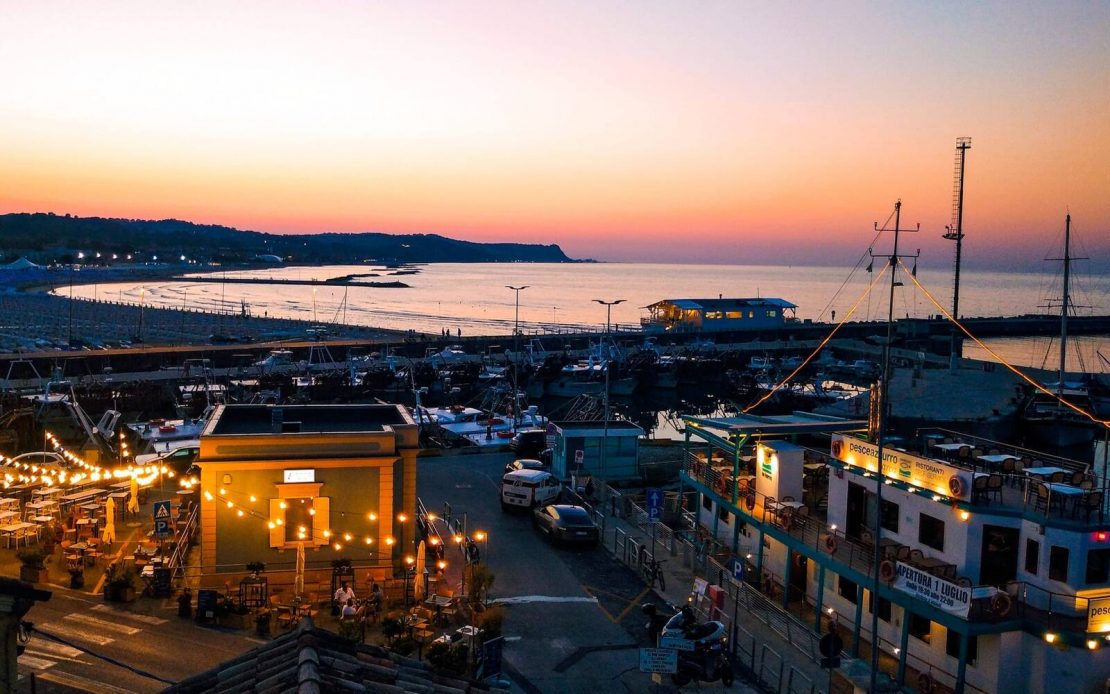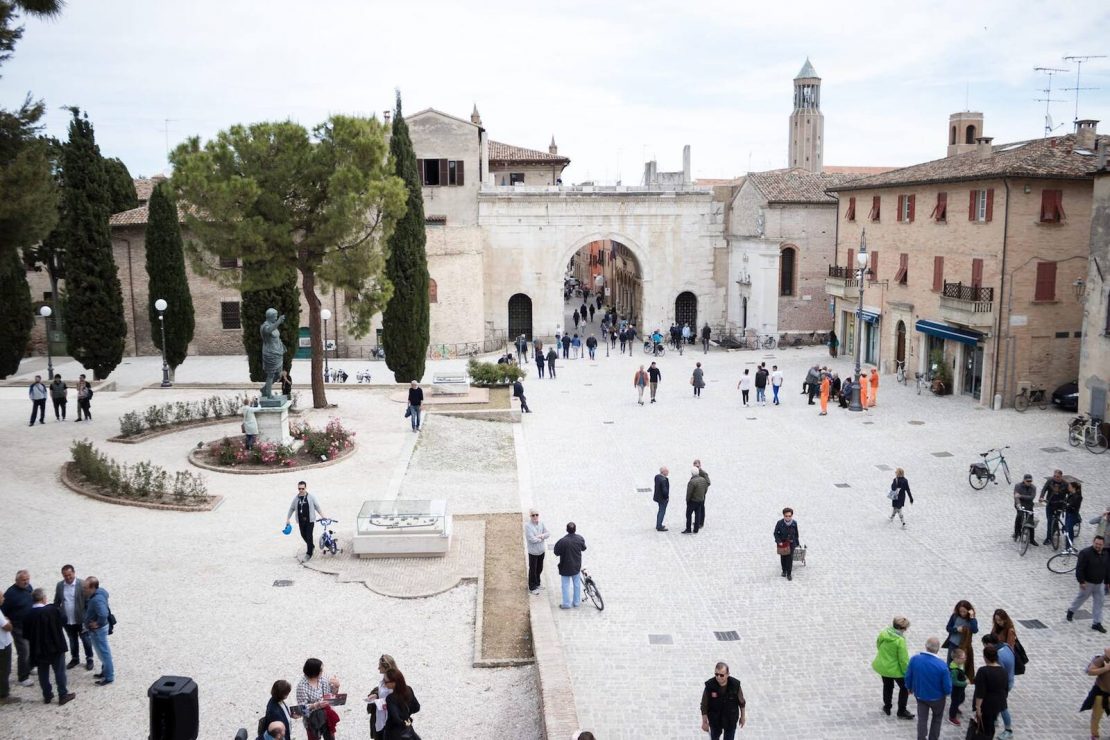The Roman origins of Fano: from monuments to the Basilica of Vitruvius
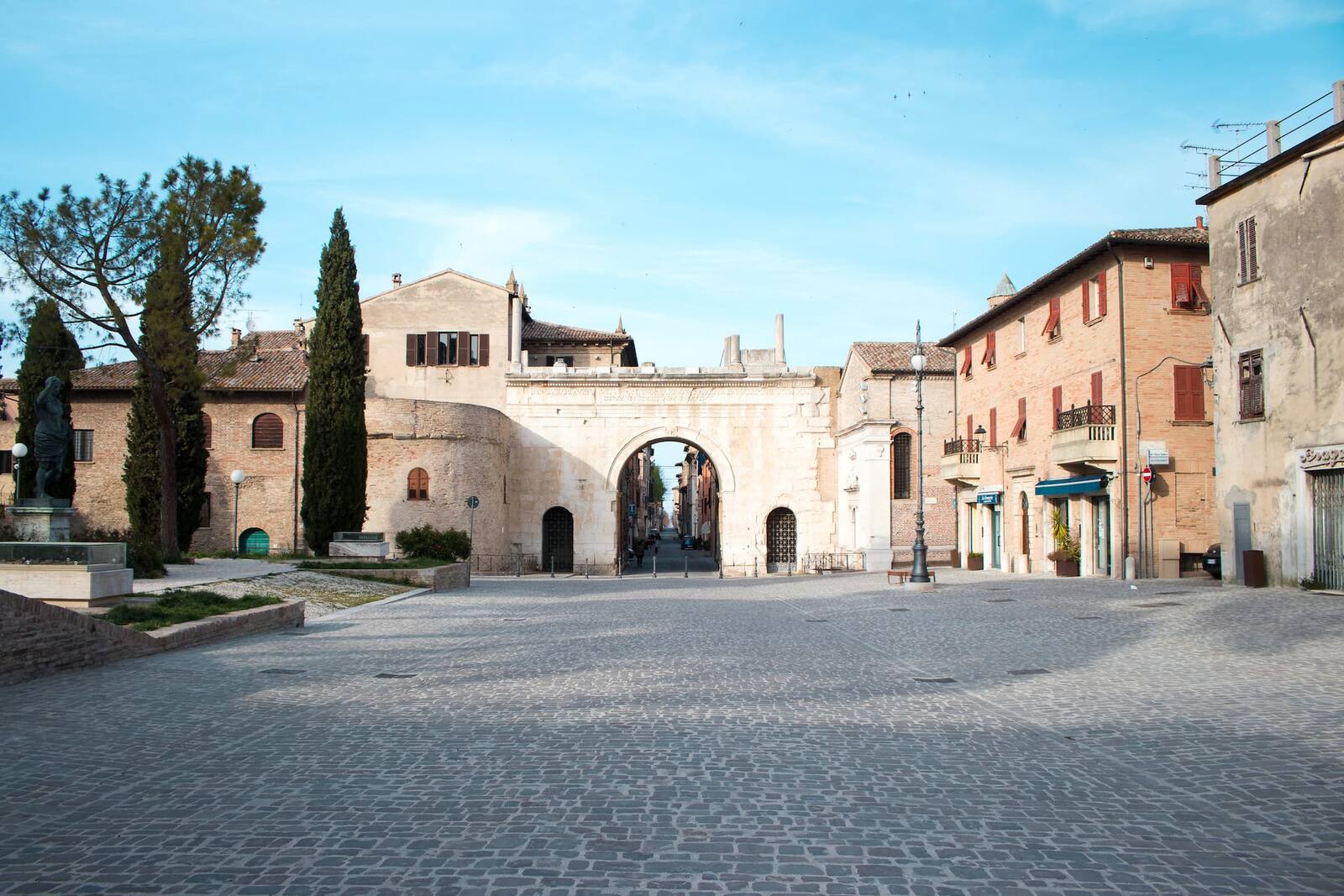
Anyone visiting Fano for the first time cannot help but notice its ancient origins, thanks to the many artifacts dating back to Roman times scattered throughout the city.
From the Augustus Arch, one of the most important historical buildings in all of Le Marche, through the remains of the walls, still intact for long stretches, to the grid of the streets of the Center, and the findings of various kinds displayed in different parts of the city, Fano is the ideal destination for lovers of history and ancient artifacts.
Its Roman origins are undoubtedly one of the levers that attracts tourists the most, not only because of their priceless historical value, but also because of an unquestionable aesthetic value that gives the city an old-world charm.
A history that goes back a long way, with illustrious and prestigious testimonies.
The Roman origins of Fano
The first written record of the city of Fano, formerly called Fanum Fortunae, dates back to 49 B.C., when Caesar established a Cohort there. The ancient name derives from the Temple built there dedicated to the Goddess of Fortune, which was most likely erected after the victory of the famous Battle of the Metaurus in which the Romans defeated Hasdrubal in 207 BC.
The fortune of what was initially only a small hub center was precisely its centrality on the route that joined Rome to Cispadane Gaul, today’s Emilia Romagna.
Under the empire of Caesar Octavian Augustus, Fano developed further by assuming the status of a Roman colony: Colonia Iulia Fanestris. The construction of the city wall that is still visible today dates back to this period.
The city then remained under the Ancient Roman Empire until its fall. From that era the city retains many monuments, evidence of an ancient past.
The most beautiful monuments of the Roman era
To admire the beauty of the historical relics of the Roman era, it will be enough to walk through the streets of the Historic Center where, within a few hundred meters of each other, it is possible to come across the following places of interest, which we have discussed in more detail in the article dedicated to places to visit in Fano:
- Pincio and Arch of Augustus
- Augustan Walls
- Herd Gate
- San Michele’s Church
- Fano Underground
Walking through the streets of the city it is evident that it was designed according to the canons of the building programs of the Augustan era, with a street structure typical of Roman urbes, complete with theaters and amphitheaters. The city’s sewage and water supply systems of the time are also still well preserved.
Fano City of Vitruvius
Marcus Vitruvius Pollon, author of the celebrated De Architectura, is considered the most important architectural theorist in history. His work was one of the pillars on which this art was based until the end of the 19th century.
Although his treatise and figure are to all intents and purposes the backbone of architectural science, Vitruvius acknowledged that he designed only one building in his lifetime: the Basilica of Fano.
Its exact location still remains uncertain, but the Roman theorist expressly mentions it in his work, specifically in the fifth of the ten volumes of which the treatise is composed, speaking of his direct involvement in the construction and design of this place of worship.
Although we have neither images nor, to date, any remains that can be attributed with certainty to its construction, thanks to the description of the building in De Architectura it has been possible to reconstruct some of its features.
The Basilica most likely arose on the city’s Forum, with the main facade on the long side and an area within it dedicated to the worship of Augustus, the aedes augusti. Historical surveys made to date assume its destruction around 635 at the hands of the Goths.
The evidence of this building is undoubtedly symbolic of the city’s importance in the Empire of the time and lends further prestige to the history of Fano, being the only place where there is certainty that Vitruvius built a building designed by him.
How to visit these attractions
As for the Vitruvian Basilica, the archaeological area with what are supposed to be the remains of the building can be accessed from the entrance of the present Church of St. Augustine.
The Pincio Hill, Augustus Arch, the Walls and the Mandria Gate are on public land and therefore always open to visitors.
For information contact Call & Go +39 366 3426985 active from 9 am to 11 pm.

